Bastion
LQ: 9.15
Recommended Age: 10+
Skills Used: Planning, Working Memory, Mathematics, Reading
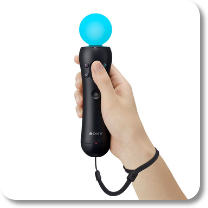
In Sports Champions: Bocce Ball, players toss a small white ball called a Pallino onto the Bocce court. Then, they must try to roll larger balls as close to it as possible. Each player gets four balls to toss, and the ball that ends up closest to the Pallino scores a point. If more than one ball lands closer than the opponent’s nearest ball, additional points are earned. To throw, players swing the PlayStation Move controller underhand and release the trigger button at the end of their throwing motion. They can add spin by twisting their wrist and make stronger throws by swinging faster. Players should always be on their toes, as opponents try to knock away their shots or even relocate the Pallino by hitting it. The game features no inappropriate content, but using the Move controller might be difficult for children very younf children. Therefore, Sports Champions: Bocce Ball is recommended to players ages 6 and up.
Understanding and articulating her own thoughts and feelings.
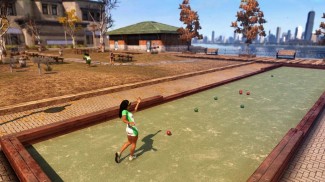 This game helps players practice their Self-Awareness skills in a few different ways. On one hand, the multipayer aspect of the game encourages players to compete against one another in a fun, friendly atmosphere. Playing with others helps players practice good sportsmanship not gloating if they win and remaining positive even in defeat.
This game helps players practice their Self-Awareness skills in a few different ways. On one hand, the multipayer aspect of the game encourages players to compete against one another in a fun, friendly atmosphere. Playing with others helps players practice good sportsmanship not gloating if they win and remaining positive even in defeat.
On the other hand, the game also helps players exercise metacognition, the process of evaluating out own thoughts and strategies. To win, players need to frequently rethink their strategies, evaluating how they are throwing the Bocce balls in order to make adjustments. Players need to continually adjust the power, spin and aim of their shot in order make a good throw. Doing so successfully requires players to identify working strategies and amend those that are less effective. For example, a throw made too far left can be remedied by moving the character to the right, adjusting the aim on the throw, or using spin.
Managing our own actions, thoughts and feelings.
Bocce, is a game that combines finesse with force, so players are required to demonstrate close control over their movements while aiming and tossing Bocce balls. If the Pallino is thrown short, players must be gentle when they swing their arms, as to not overthrow. A slower underhand motion will result in a shorter toss, while a long and quick underhand motion will cause the ball to travel a great distance. Players can throw the ball with a variety of spins, too, allowing them maneuver around other balls on the court. Spins are generated by the turning of the wrist. A forceful turn will give the ball heavy spin, while a delicate turn will result in a milder spin. Players must demonstrate precision over their actions and impulses in order to make quality throws. It only takes one haphazard toss to re-arrange the court, so players must make every shot count.
Developing a systematic approach for setting and achieving goals.
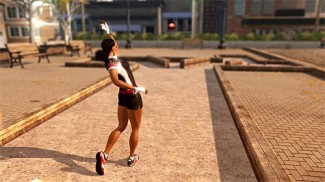 Sports Champions: Bocce Ball is as much about strategy as it is about precision. Players can knock out opponents balls, reposition the Pallino by hitting it, and knock their own balls into better positions. To do achive such tactics successfully, players must consider many factors before throwing. Planning the correct angle of a shot and positioning the character must be done first, then players must estimate the power, arc and spin of their throws.
Sports Champions: Bocce Ball is as much about strategy as it is about precision. Players can knock out opponents balls, reposition the Pallino by hitting it, and knock their own balls into better positions. To do achive such tactics successfully, players must consider many factors before throwing. Planning the correct angle of a shot and positioning the character must be done first, then players must estimate the power, arc and spin of their throws.
An opponent's strengths and weaknesses can also be taken into account. For example, if another player struggles with longer tosses, it would make sense to throw the Pallino farther down the court. If a player has their ball closest to the Pallino, they may plan to play conservative by deliberately throwing their Bocce balls short, to avoid knocking their opponents' ball closer to the Pallino.
Use this Play Together guide to learn how you can help your child turn Sports Champions: Bocce Ball play time into a positive learning and relationship-building experience. To learn more about why playing games with your children is so important, check out our Science of Play page.
Take a minute to talk with your child about how the Self-Awareness, Self-Control, and Planning thinking skills work, and why they are important for success in school and at home.
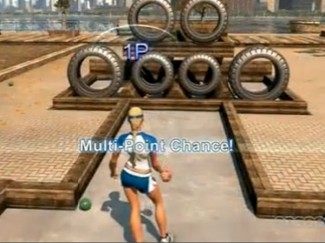 Sports Champions: Bocce Ball can be played by one or more players. and the multiplayer feature makes the game great for families and friends. You can play competitively with your child, or work together in a single player match. After looking over the gameplay goals below, work with your child to complete each one.
Sports Champions: Bocce Ball can be played by one or more players. and the multiplayer feature makes the game great for families and friends. You can play competitively with your child, or work together in a single player match. After looking over the gameplay goals below, work with your child to complete each one.
Gameplay Goals:
Our Make it Work activities are designed to transform your child’s gameplay to real-world improvements in thinking and academic skills. If you’re just getting started with LearningWorks for Kids, we suggest you try them all to find which are the best for you and your child.
Read over the pages for Self-Awareness, Self-Control, and Planning. Then take some time to introduce these skills to your child.
Explain to your child that:
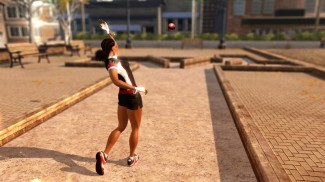 Estimating how easy or difficult a task might be will assist your child to gauge his ability to complete the task. It can also be helpful to consider potential barricades to completion of a goal. Ask questions that encourage your child to think about what might hinder, delay or prevent successful completion of a goal.
Estimating how easy or difficult a task might be will assist your child to gauge his ability to complete the task. It can also be helpful to consider potential barricades to completion of a goal. Ask questions that encourage your child to think about what might hinder, delay or prevent successful completion of a goal.
Teach counting strategies to delay actions. For example, encourage your child to count to 5 or 10 before acting on an impulse or answering questions. Offer a reward as an incentive for practicing this strategy at home and school. Talk out loud about your own self-control strategies. For example, say things like “I’d really like to eat now, but I want to go exercise, and eating will make it more difficult for me to exercise”, or, “let me think about that for a minute before I answer you.” Work with your child to develop her own set of verbal self-instructions to encourage momentary delays or reflections. Examples include saying “one, one thousand, two, one thousand”, or spelling a reminder word slowly, such as WAIT or STOP.
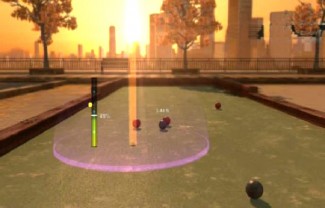 Anticipate needs. Plan together for what your child might need for school. Begin with a list of essential supplies such as pencils, notebooks, markers, backpack, and lunch box. Then list other materials or things she would like to bring to school and decide together which items to purchase. Gradually encourage your child to make these lists on her own. Encourage your child to think about how to determine the most important items to purchase.
Anticipate needs. Plan together for what your child might need for school. Begin with a list of essential supplies such as pencils, notebooks, markers, backpack, and lunch box. Then list other materials or things she would like to bring to school and decide together which items to purchase. Gradually encourage your child to make these lists on her own. Encourage your child to think about how to determine the most important items to purchase.
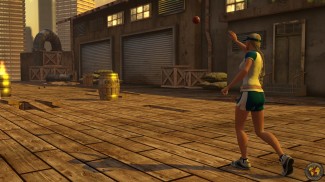 Children with ADHD often have trouble sustaining attention during tasks, due to psychological restlessness and compulsive movement. As a result, children are constantly seeking alternate mediums of entertainment to keep them stimulated. The challenge is to keep all energy and focus dedicated to the task at hand. Sports Champions: Bocce Ball proves to be a game capable of absorbing hyperactive children in a way that brings out the ability to monitor their own behavior.
Children with ADHD often have trouble sustaining attention during tasks, due to psychological restlessness and compulsive movement. As a result, children are constantly seeking alternate mediums of entertainment to keep them stimulated. The challenge is to keep all energy and focus dedicated to the task at hand. Sports Champions: Bocce Ball proves to be a game capable of absorbing hyperactive children in a way that brings out the ability to monitor their own behavior.
How to Use Sports Champions: Bocce Ball for Children with ADHD:
All membership plans come with full access to our entire suite of tools learning guides, and resources. Here are a few of the ones we think you’ll like the most: